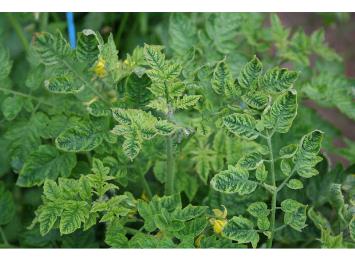Plant research to protect tomato production
 UQ PhD student is battling an elusive virus to save Australia's tomato sauce and sandwiches.
UQ PhD student is battling an elusive virus to save Australia's tomato sauce and sandwiches.
As part of a Cooperative Research Centre for National Plant Biosecurity project (CRCNPB) Sharon van Brunschot from the School of Biological Sciences is examining the Tomato yellow leaf curl virus, which first appeared in South-east Queensland in 2006.
Since then it has had a significant impact on tomato production, with disease incidence in some areas reaching 100 percent.
'My research will create new diagnostic methods, and help to increase Australia's capacity to stop the movement and spread of plant viruses once they have entered Australia,' Ms van Brunschot said.
Caused by a group of geminiviruses, the Tomato yellow leaf curl disease is regarded as the most significant constraint to tomato production worldwide.
Since its introduction, the virus has spread throughout South-east Queensland with particularly high incidences in Bundaberg, and is spread by the silverleaf whitefly.
'I'm looking into ways for improving the management of this virus by developing better detection methods, which are faster, easier and more accurate,' Ms van Brunschot said.
She said increases in trade and travel – the two most common sources of entry for pest and pathogens – were the likely culprits for the virus's introduction to Australia.
Although the tomato is the major host, the virus can cause disease in other crops such as chilli peppers and beans and also persists in many common weeds.
Once in Australia, the pathogens threaten Australia's plant industries and native eco-systems, she said.
'The viruses I work with evolve by exchanging genetic material, with new viruses consistently arising, the risk for more viruses evolving is high and Australia needs to be prepared with cutting edge science to quickly diagnose these threats,' Ms van Brunschot said.
Working from the Queensland Primary Industries and Fisheries at the Indooroopilly Sciences Centre, she has discovered a number of new genetic characteristics of the virus.
In September Ms van Brunschot will travel to The Netherlands on a scholarship provided by the Cooperative Research Centre for National Plant Biosecurity (CRCNPB) to continue working on virus detection technologies.
Photo acknowledgement: .gif)
Photo caption: Tomato plant with symptoms of Tomato yellow leaf curl virus
Content supplied by: University of Queensland

